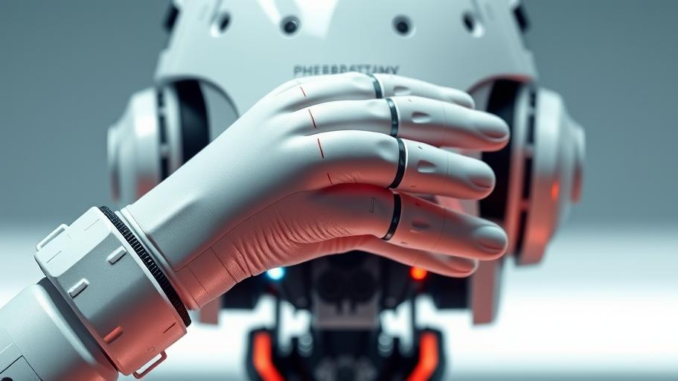
Summary
Vitestro’s Aletta, the first autonomous robotic phlebotomy device, promises to revolutionize blood collection with AI-powered precision and efficiency. Aletta automates the entire process, from tourniquet application to bandaging, improving patient experience and addressing staffing shortages. The device has received CE marking and is preparing for FDA approval and global expansion.
Secure patient data with ease. See how TrueNAS offers self-healing data protection.
** Main Story**
Okay, so have you heard about Aletta? It’s this new autonomous robotic phlebotomy device (ARPD) from Vitestro, a Dutch company, and honestly, it’s pretty wild. They’re calling it the future of blood collection, and it’s easy to see why. Named after Dr. Aletta Jacobs, which is a nice touch, it’s designed to bring some serious changes to how we draw blood.
How Does Aletta Actually Work?
Basically, Aletta uses a combination of AI and robotics to automate the whole process. It’s not just some fancy needle holder; it’s a fully integrated system. Using AI-powered Doppler ultrasound and imaging, it finds the best vein for the puncture, and then a robotic arm precisely inserts the needle. The machine then handles the collection into the correct tubes and even applies a bandage when it’s done. Pretty seamless, right? It minimizes the need for multiple attempts, which is something every patient can appreciate.
Addressing Real-World Problems
One of the biggest challenges facing healthcare right now is staffing shortages. And phlebotomists are no exception! Aletta could really help here by automating those routine blood draws. This frees up skilled nurses and other healthcare pros to focus on the more complex stuff that really needs their attention.
Plus, it can really improve the patient experience, cutting down on wait times and just making the whole process smoother. Imagine going in for a blood draw and not having to wait forever – sounds good, doesn’t it? Apparently, studies with over 4,000 patients have shown Aletta’s pretty comfortable, with pain levels that are the same or even lower than when a human draws blood. Which, if true, is pretty impressive.
Key Features that Stand Out:
- AI-Powered Vein Identification: No more poking around trying to find a vein. The ultrasound and imaging make sure it gets it right the first time. This is a big deal for patients who are difficult to draw blood from.
- Robotic Precision: The robotic arm delivers a consistent and accurate needle insertion. Reducing patient discomfort.
- Full Automation: From applying the tourniquet to putting on the bandage, it’s all handled automatically. Less variability, less chance of human error. Though, of course, you can’t fully take humans out of the equation just yet.
- Seamless Integration: It’s designed to fit right into existing workflows in hospitals and labs, improving efficiency without completely upending things.
- Patient Safety and Comfort: Clinically validated and patient-approved, with pain levels comparable to or better than manual draws.
Looking Ahead: Global Reach and FDA Approval
Aletta already has CE marking, so it’s good to go in Europe. But, Vitestro isn’t stopping there. They’re working on getting FDA approval for use in the U.S., which would really open things up. They’re running a clinical trial across multiple centers in the US, in collaboration with some big names in the healthcare world, too. Assuming all goes well, it’s looking like Aletta could really take off globally. As of March 10, 2025, we could see this changing how phlebotomy is done everywhere.
More Than Just Blood Draws
So, this Aletta device is a cool step, but it’s more than just that. It’s a sign of where medical robotics is heading in general. As the tech gets better, think about all the other ways we could use robots in healthcare. We’re talking minimally invasive surgery, personalized drug delivery… the possibilities really do seem endless. It’s all about making things better for patients, improving outcomes, and, let’s be honest, making the whole healthcare landscape a bit more efficient. It won’t happen overnight but the ball is rolling. It could really revolutionize things, don’t you think?


Robot phlebotomists, huh? So, when do they start offering “frequent flyer” miles for blood donations? Asking for a friend who’s *totally* not a vampire. I wonder if Aletta can handle those awkward post-donation juice and cookie cravings too.
Haha, love the “frequent flyer” miles idea! Maybe Aletta can be programmed to dispense the juice and cookies too – a fully automated, vampire-friendly experience. On a serious note, streamlining the post-donation process could encourage more people to donate, which would be a huge win!
Editor: MedTechNews.Uk
Thank you to our Sponsor Esdebe